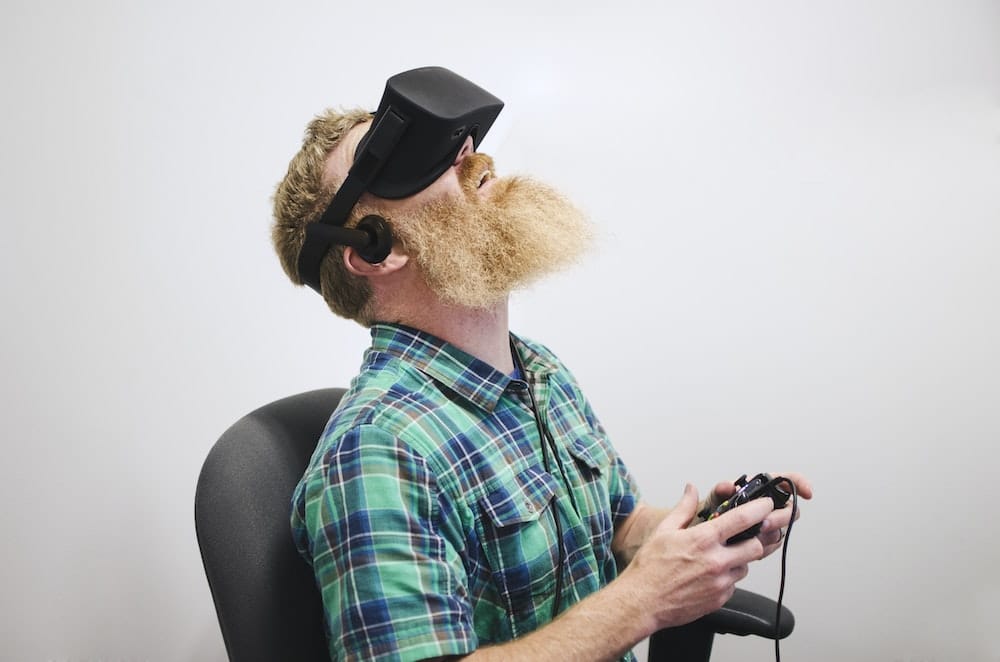Technology is continuously evolving, and it’s no secret that the retail industry is being significantly reshaped by it. One of the most innovative and exhilarating technological advancements shaking up the retail space is Virtual Reality (VR). This phenomenal technology is transforming the way customers shop and interact with products online, providing an immersive and interactive experience unlike anything else. In this article, we will delve into how virtual reality can enhance the shopping experience in e-commerce.
Incorporating Virtual Reality into Online Shopping
Virtual reality technology enables customers to have a 360-degree view of products, making the online shopping experience more interactive and engaging. This immersive technology is set to revolutionize the e-commerce industry, providing customers with an in-store shopping experience without leaving their homes.
Additional reading : How Are Smart Diapers Improving Infant Health Monitoring?
A notable advantage of virtual reality in e-commerce is its capacity to provide detailed product reviews. Through VR, customers can explore products in a three-dimensional space, inspecting them from all angles and even testing them in a virtual environment. For example, a customer can virtually try on a pair of shoes and see how they look from every perspective. This immersion helps eliminate the guesswork and provides customers with a clearer idea of the product’s look and feel, thereby increasing customer confidence.
Moreover, virtual reality can create personalized shopping experiences tailored to individual customers. By leveraging data and AI, retailers can offer virtual store tours that adapt to the customer’s preferences, displaying products that align with their taste and shopping history.
Have you seen this : Can Voice Recognition Software Accurately Identify Different Emotional States?
Boosting Brand Engagement and Loyalty with Virtual Reality
Virtual reality is not merely a tool for showcasing products; it is also a powerful instrument for enhancing brand engagement and cultivating loyalty. By providing an immersive and interactive shopping experience, you make shopping enjoyable and memorable for your customers, prompting them to return to your store.
By introducing VR to your e-commerce platform, you allow customers to engage with your brand on a deeper level. Through virtual store tours, interactive product demonstrations, and engaging games, customers get to experience your brand in ways that static images and text simply can’t provide. This level of engagement can significantly boost brand recall and loyalty.
Moreover, by offering unique and enjoyable shopping experiences, your brand can stand out in the crowded e-commerce space. This differentiation can attract more customers to your platform and help retain existing ones.
The Future of E-commerce with Augmented and Virtual Reality
It’s clear that virtual reality has tremendous potential in the realm of e-commerce. But what does the future hold for this exciting technology and online shopping?
The future of e-commerce with augmented and virtual reality is brimming with possibilities. As the technology becomes more advanced and accessible, we will see more retailers incorporating VR into their e-commerce platforms.
One possibility is the integration of VR and Artificial Intelligence (AI) to create hyper-personalized shopping experiences. Imagine a virtual shopping assistant that knows your preferences, sizes, and shopping history. This assistant could recommend products that suit your style, virtually try them on for you, and even predict what items you might need in the future.
Another exciting prospect is the use of VR for immersive product launches. Instead of scrolling through images of a new product, customers could attend a virtual launch event where they can explore the product in 3D, interact with it, and even place pre-orders within the VR space.
Overcoming Challenges in Implementing Virtual Reality in E-commerce
Despite the immense potential of VR in e-commerce, it also comes with challenges that retailers need to address. These include the high cost of VR hardware and software, the need for high-speed internet for seamless VR experiences, and the potential for customers to feel overwhelmed by the technology.
To maximize the benefits of VR, businesses should focus on creating user-friendly VR experiences. This includes designing intuitive interfaces, providing clear instructions, and offering customer support for VR-related inquiries.
Furthermore, retailers should consider offering a range of VR experiences to cater to different customer preferences. Not all customers will have access to high-end VR headsets, so consider providing alternatives such as 360-degree videos or augmented reality (AR) features that can be accessed through smartphones.
Despite these challenges, the benefits of virtual reality for e-commerce are undeniable. With careful planning and execution, VR can provide a significant boost to your online retail business, enhancing the shopping experience and setting your brand apart in the competitive e-commerce landscape.
Virtual Showrooms and Real Time Shopping Experiences
Virtual showrooms are another exciting application of VR technology in e-commerce. These digital platforms enable customers to explore a store in a virtual environment, providing a similar experience to browsing in a physical store. They can walk through aisles, pick up products, and inspect them up close, all from the comfort of their homes.
Real-time shopping experiences, on the other hand, allow customers to interact with products as they would in a physical store. This means they can virtually try on clothes, test out appliances, and even experience the sensation of using different products. A customer can, for example, virtually try on a watch and see how it looks on their wrist in real time.
Real-time shopping experiences paired with virtual showrooms can create an engaging and interactive shopping environment that mimics the in-store experience. This can significantly enhance the customer experience, making online shopping more enjoyable and less guesswork.
However, it’s important to remember that virtual showrooms and real-time shopping experiences require high-quality graphics, smooth navigation, and intuitive interfaces to be effective. Therefore, retailers should invest in high-quality VR technology and work with experienced developers to create these virtual experiences.
Conclusion: The Transformative Potential Of Virtual Reality In E-Commerce
The potential of virtual reality in e-commerce is awe-inspiring. From providing immersive shopping experiences to boosting brand engagement and loyalty, VR is set to revolutionize the way we shop online.
Despite the challenges that come with implementing VR in e-commerce, such as high costs and the need for high-speed internet, the benefits far outweigh them. As more consumers become comfortable with using virtual reality technology and more retailers invest in creating user-friendly VR experiences, we can only expect the use of VR in e-commerce to skyrocket.
Moreover, with advancements in technology, we could soon see the integration of AI with VR to create hyper-personalized shopping experiences, and the use of VR for immersive product launches. These developments could not only enhance the online shopping experience but could also reshape the entire e-commerce landscape.
In conclusion, the union of virtual reality and e-commerce holds enormous promise. By embracing this technology, retailers can provide a more interactive and engaging shopping experience, setting themselves apart in the highly competitive e-commerce arena. It’s clear that the future of online shopping is not only exciting but also virtually limitless.






